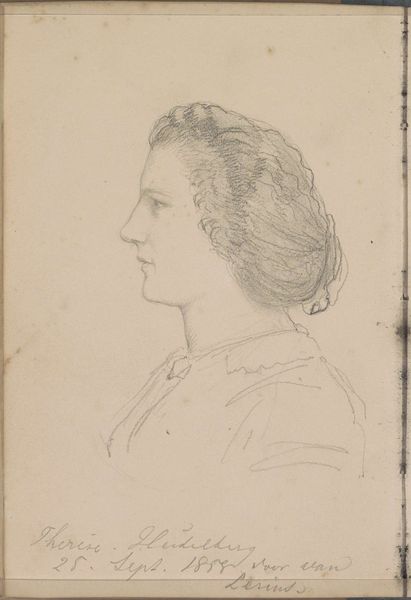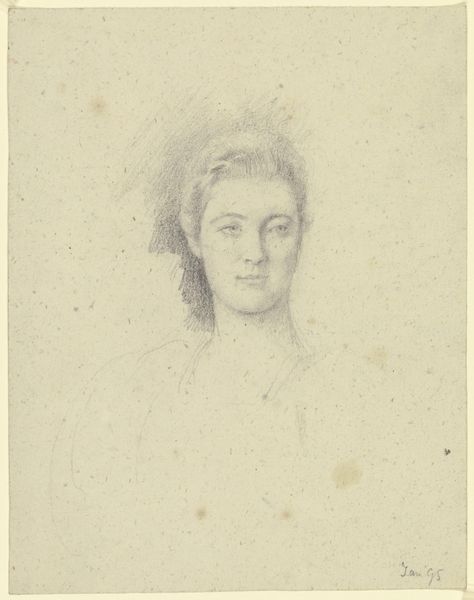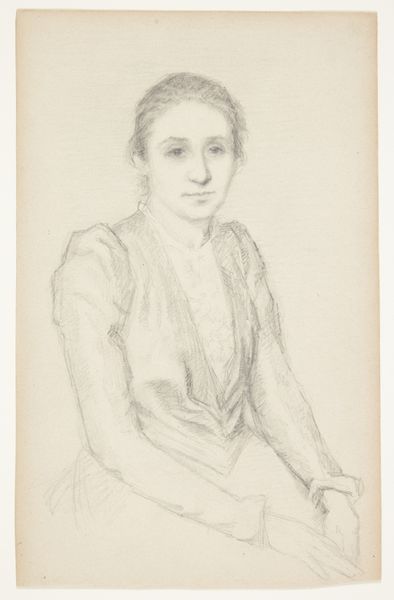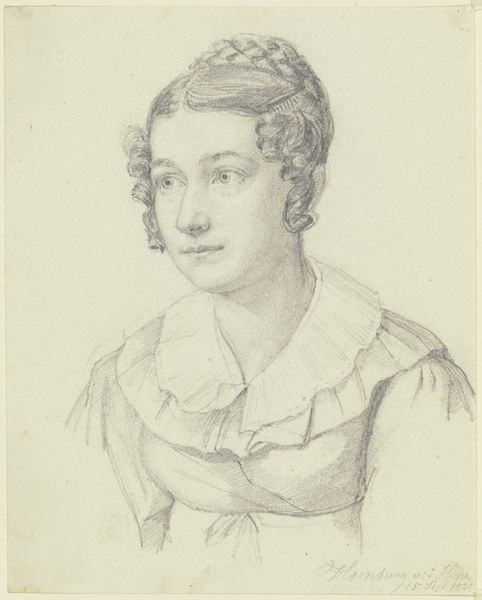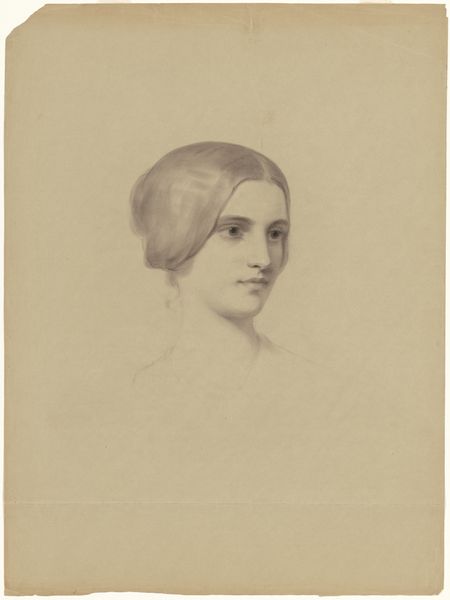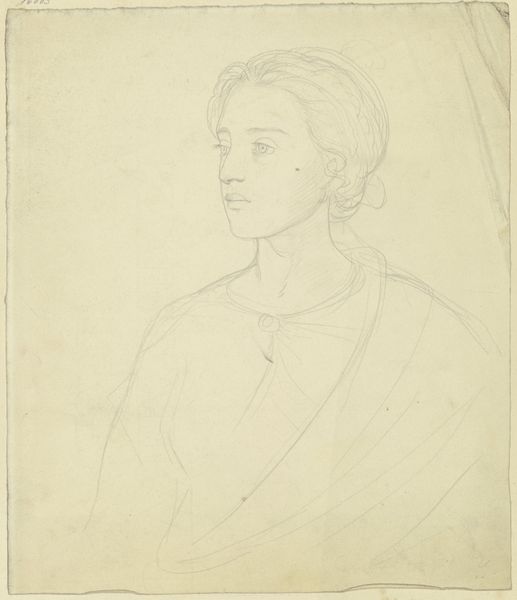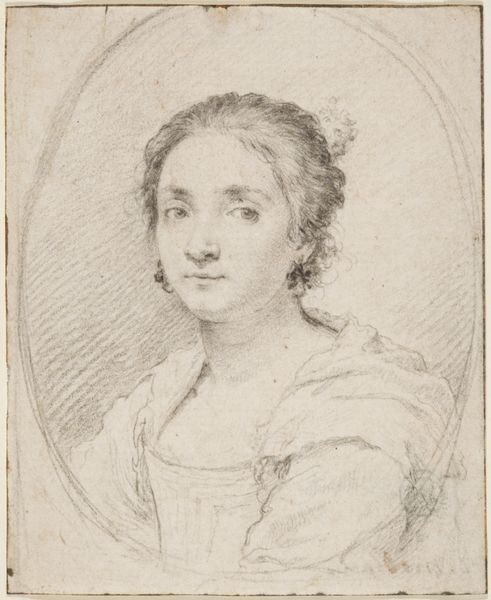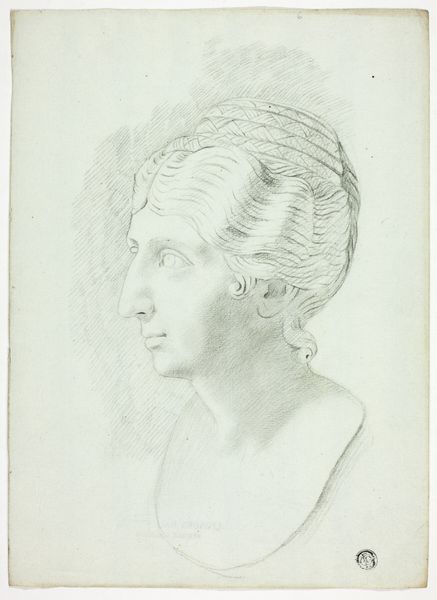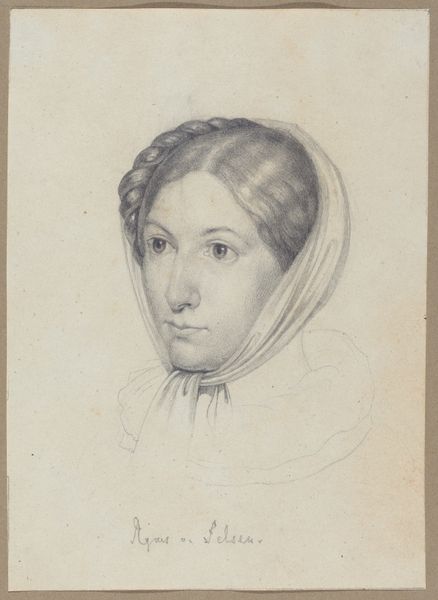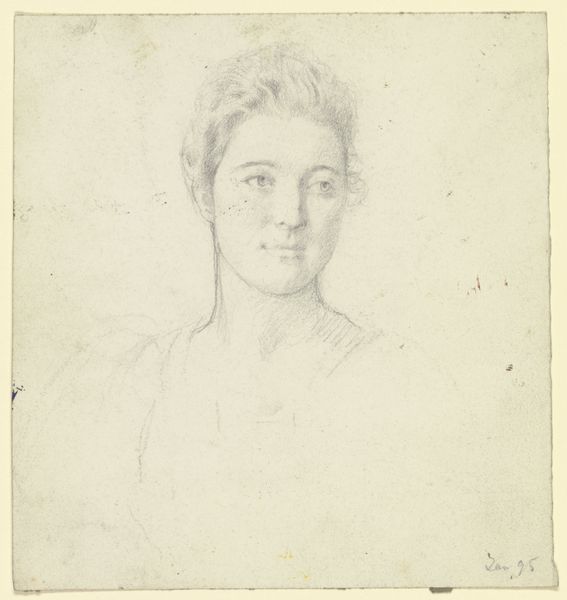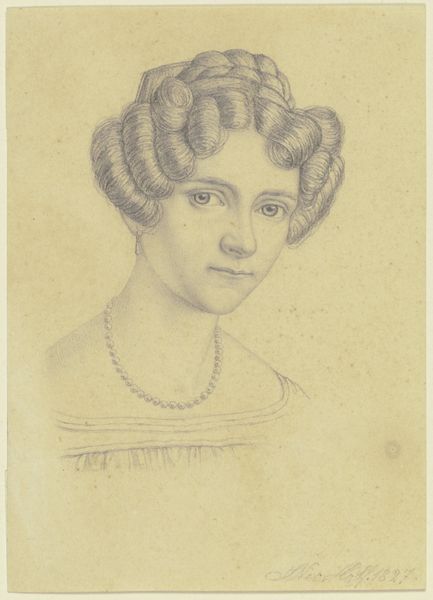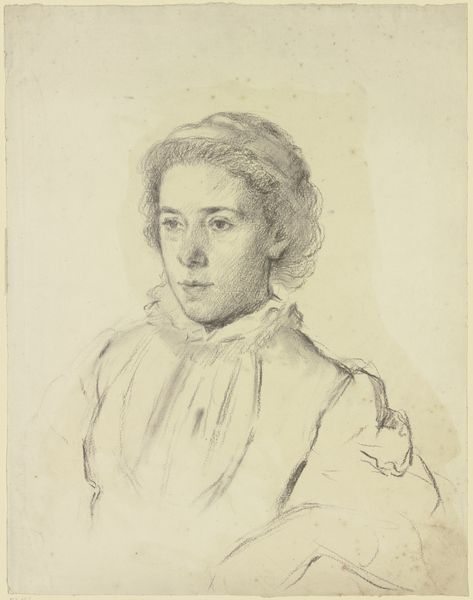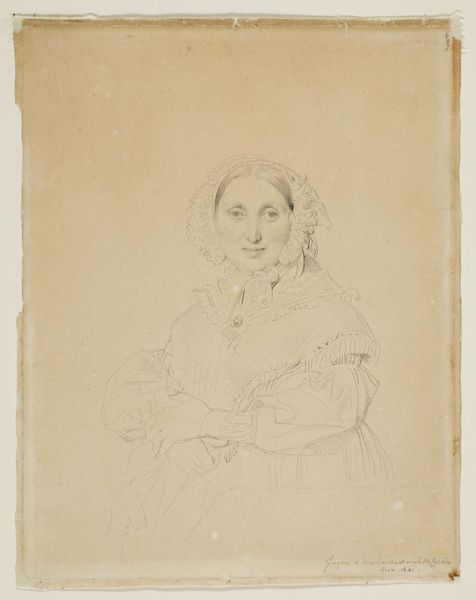
drawing, pencil
#
portrait
#
pencil drawn
#
drawing
#
facial expression drawing
#
light pencil work
#
pencil sketch
#
figuration
#
portrait reference
#
pencil drawing
#
romanticism
#
pencil
#
animal drawing portrait
#
portrait drawing
#
portrait art
#
fine art portrait
Dimensions: overall: 24.7 x 19.2 cm (9 3/4 x 7 9/16 in.)
Copyright: National Gallery of Art: CC0 1.0
Curator: This is "Teresa Scala, Calabrese," a pencil drawing created in 1819 by Peter Rittig. Editor: What a delicate rendering! It has this haunting, almost ethereal quality. Her gaze is so direct, yet distant… makes you wonder what she's pondering. Curator: Indeed. It’s a fascinating example of early 19th-century portraiture. Consider the Romanticism movement, its emphasis on emotion and the individual, deeply intertwined with the burgeoning middle class and their aspirations. Editor: Exactly! There is something melancholic in those eyes… Makes me feel like she wants to escape her circumstances. Look at the soft, almost blurry edges—it gives the feeling that everything’s mutable. It’s romantic not in the idealized sense but as a quiet yearning for something undefined. Curator: Yes, and the lack of adornment beyond the carefully rendered hair and a simple earring speaks to a particular type of class positioning and artistic approach, which is reflected throughout the art establishment in the early nineteenth century. The medium, pencil, speaks to an increased accessibility of portraiture. Editor: I also appreciate how the artist uses light and shadow, so subtle. It isn't just a likeness, but a representation of inner feelings…almost as if he tried to grasp Teresa’s essence, not merely her appearance. Curator: Precisely! Such depictions reinforced evolving societal norms around beauty and character. Moreover, portraiture at this time often served political and social functions. Family lines were emphasized; virtue signaled. Editor: You know, it almost feels voyeuristic to be looking at her. A candid glimpse of a real woman, preserved in graphite... It also reminds you that the subject can never give consent when looking back from a piece of paper across a span of centuries! Curator: A poignant observation indeed. Viewing art from centuries past challenges us to confront ethical implications and historical perspectives of representation. Editor: Looking at it all together…It’s more than just pencil on paper, it's a little doorway into a particular life from long ago. Curator: Well said! And for me, it serves as a document through which to analyze the intricate tapestry of historical representation.
Comments
No comments
Be the first to comment and join the conversation on the ultimate creative platform.

